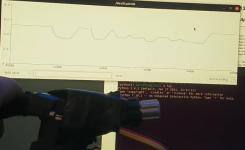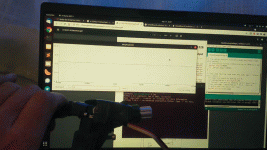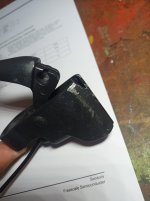Mahe said:That is the most elegant solution I encounter so far! I'd love to reproduce that work but it does not seem straightforward to realize. I'd have a few questions to that end:
- could you provide a seller link or specifications for the hall sensor + magnet you used? I suppose they are various kinds.
- can you explain the role of the screw again please? I understand it is convenient to adjust the distance between hall sensor and magnet and calibrate it accordingly. Do I understand correctly that using an iron screw, the screw itself becomes the magnet sensed by the hall sensor?
- what range of distances between sensor and magnet are we talking about actually? (or between sensor and screw tip, if that's what it comes down to)
- how instrumental is your specific brake model ? Would such an approach work fine with some standard, middle range, say my simple Shimano brake levers? (I'm thinking of the screw, the cavity for the hall sensor a'nd the free range before triggering mechanical brakes). Probably any setup where hall sensor and magnet are brought closer together by braking would do it, right? Like roughly tape/glue the hall sensor on the fixed brake body and magnet on the brake lever, near the point of contact? But sure a clean setup is important. Often there is some play in the brake lever with respect to the fixed part. Could that contaminate the signal to the point of making the sensor useless for braking? (again the distance/sensitivity question)
Many thanks in advance for any hint you may provide!
Mahé
i used A1324LUA-T linear hall sensor. You can order those example in Digikey, Farnel etc. Look places using Google.
Role of that screw is to be magnetic tip, which i can easily adjust (how far / close it is to hall sensor). And round magnet is easy to glue top of screw. Also in my brake levers (Hope Tech 3) there was place for that screw. I just replaced original red screw to some screw that is ferro / iron material and can magnetized.




